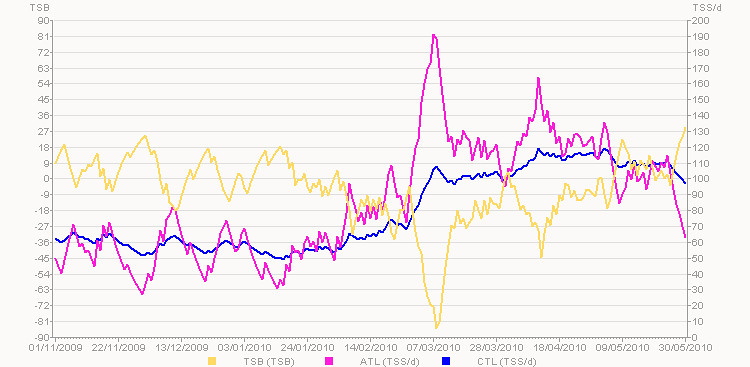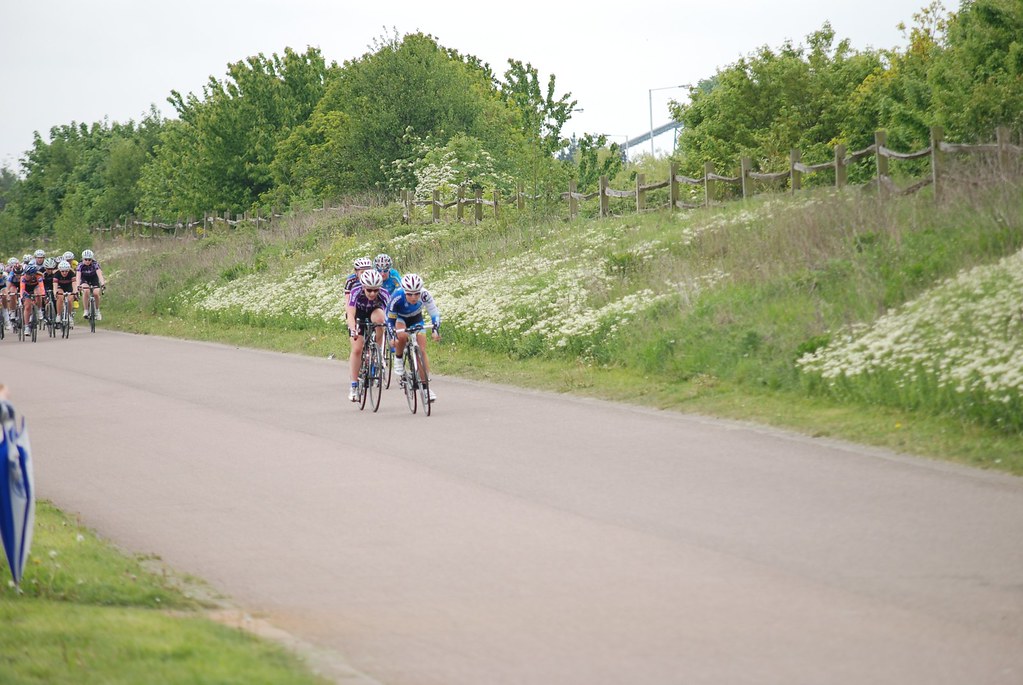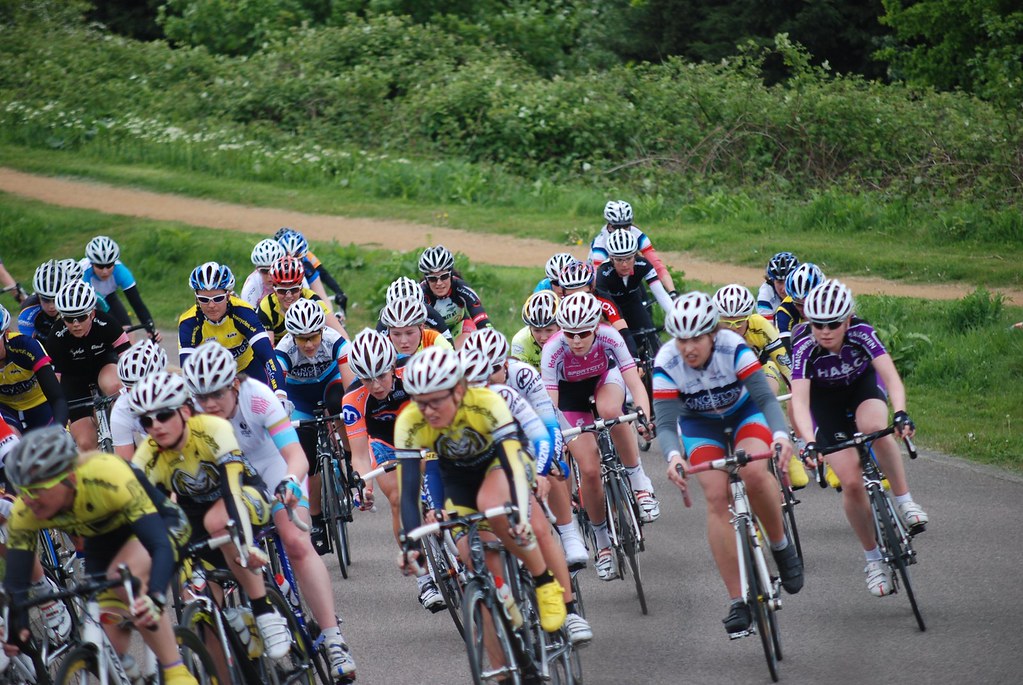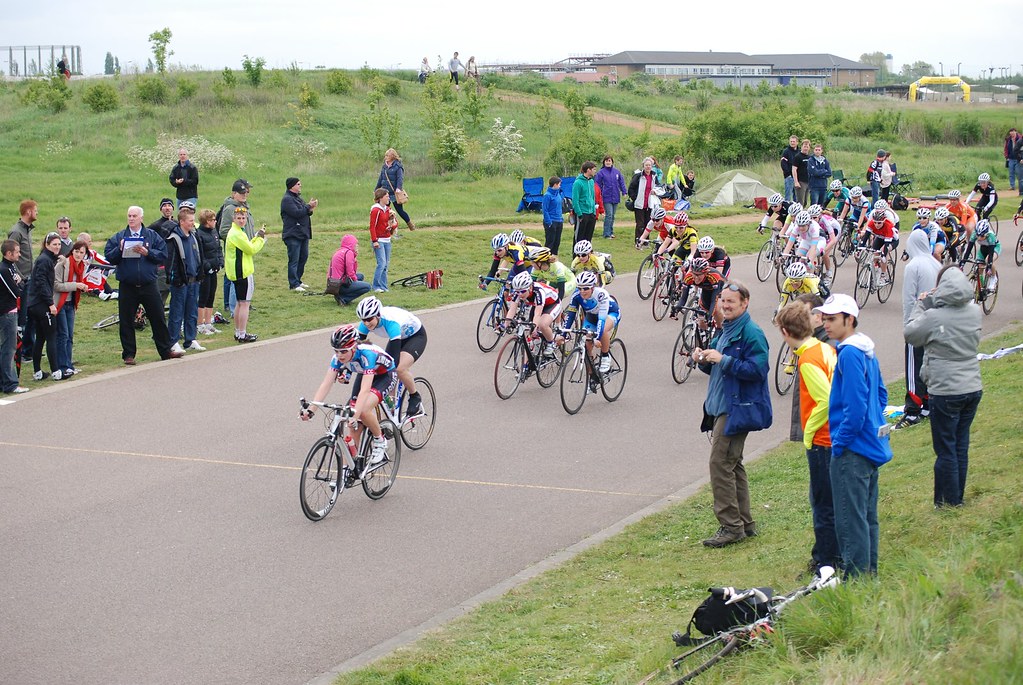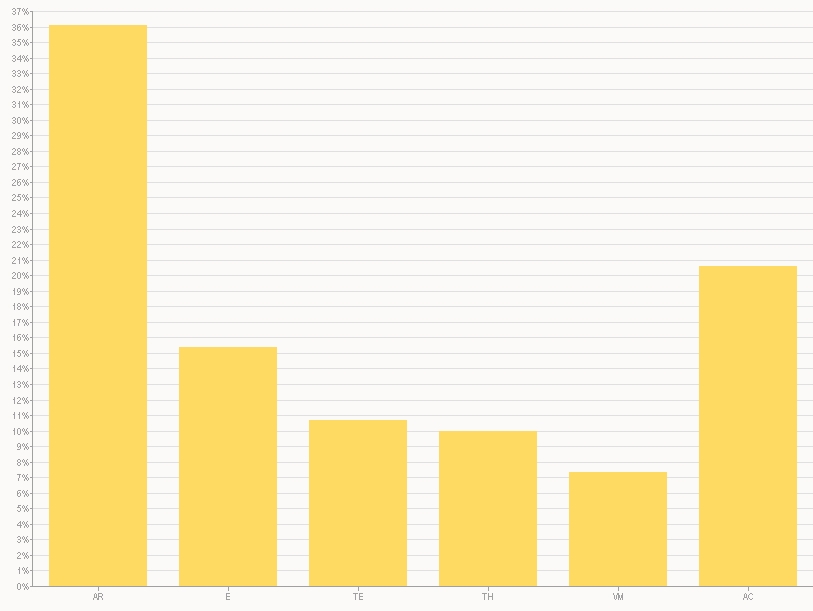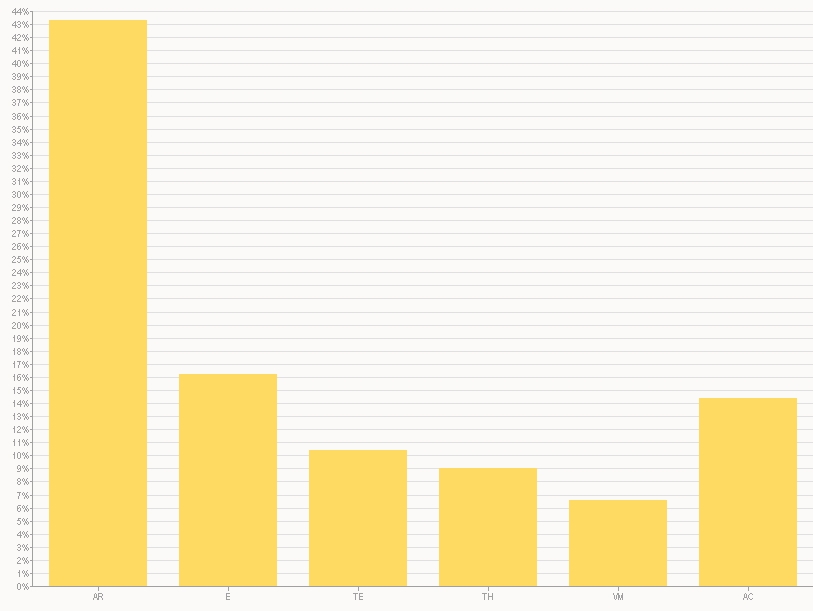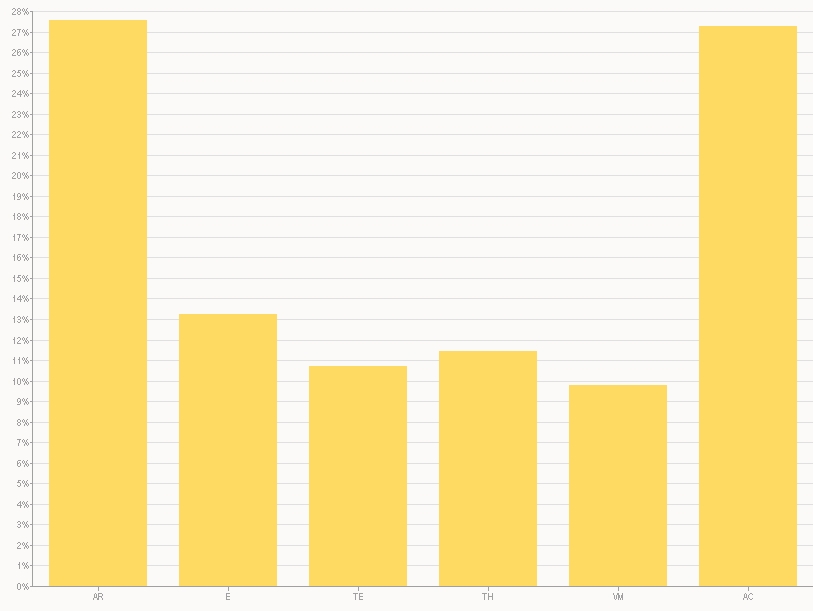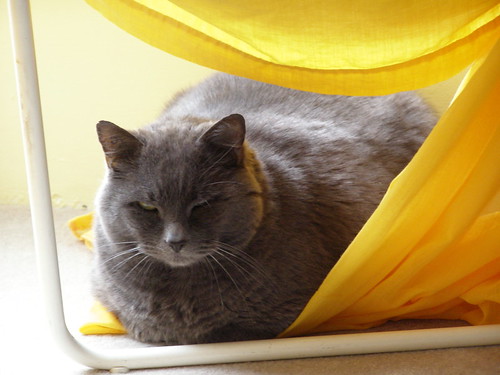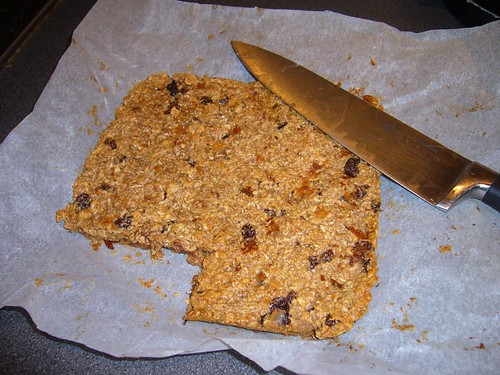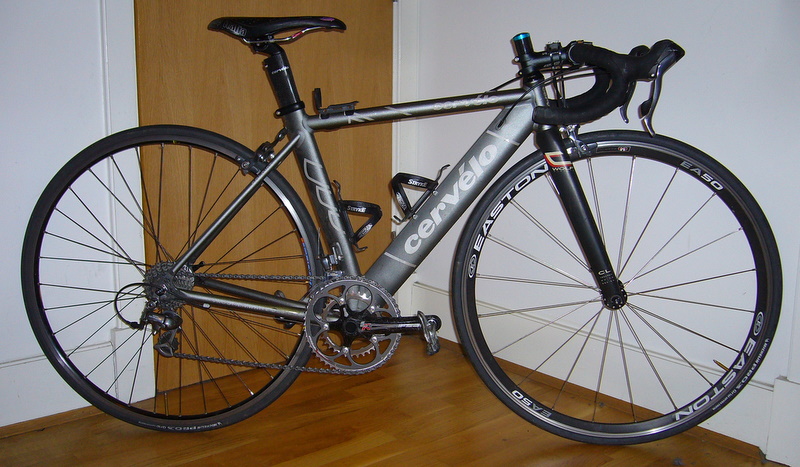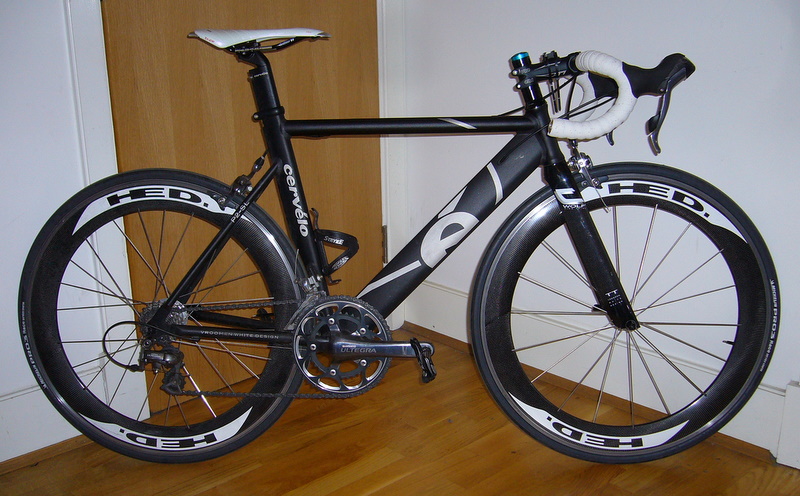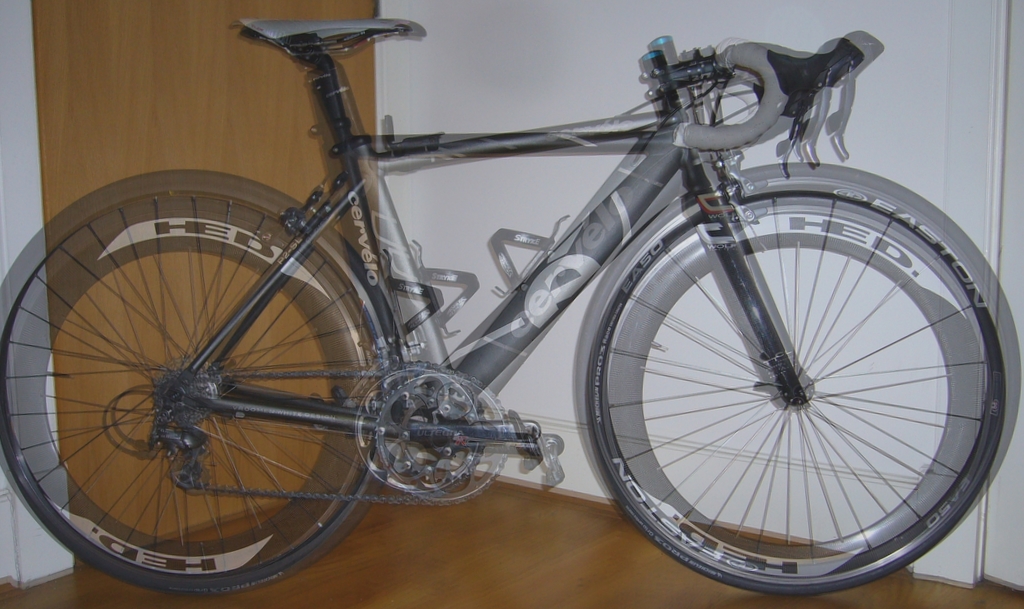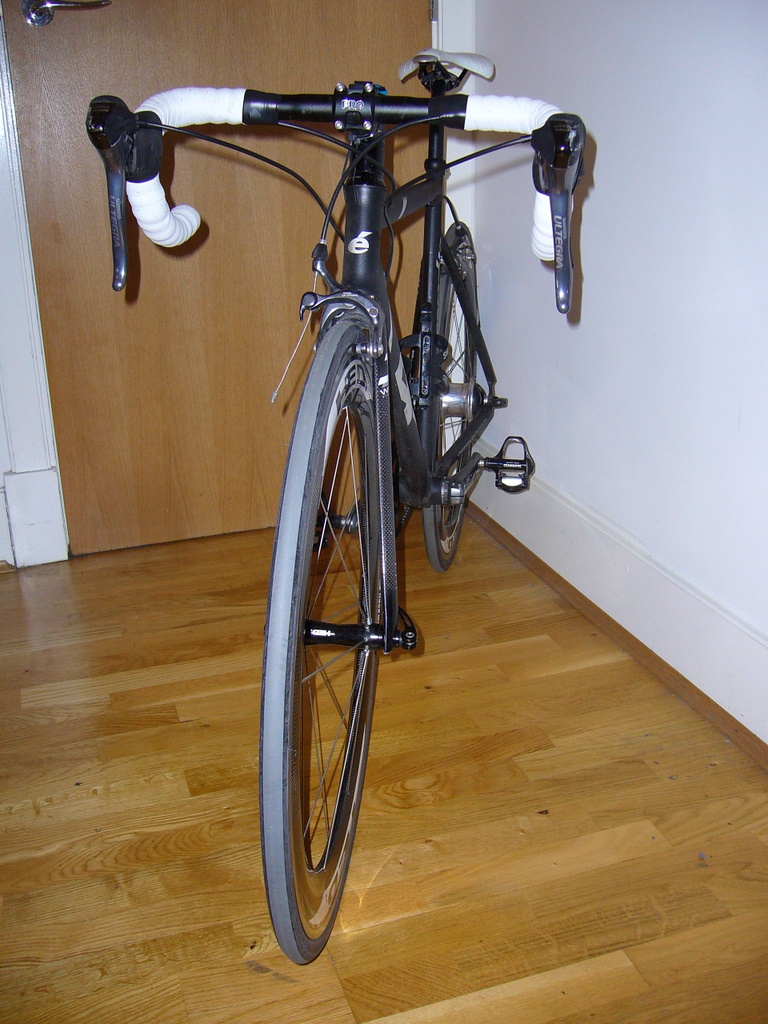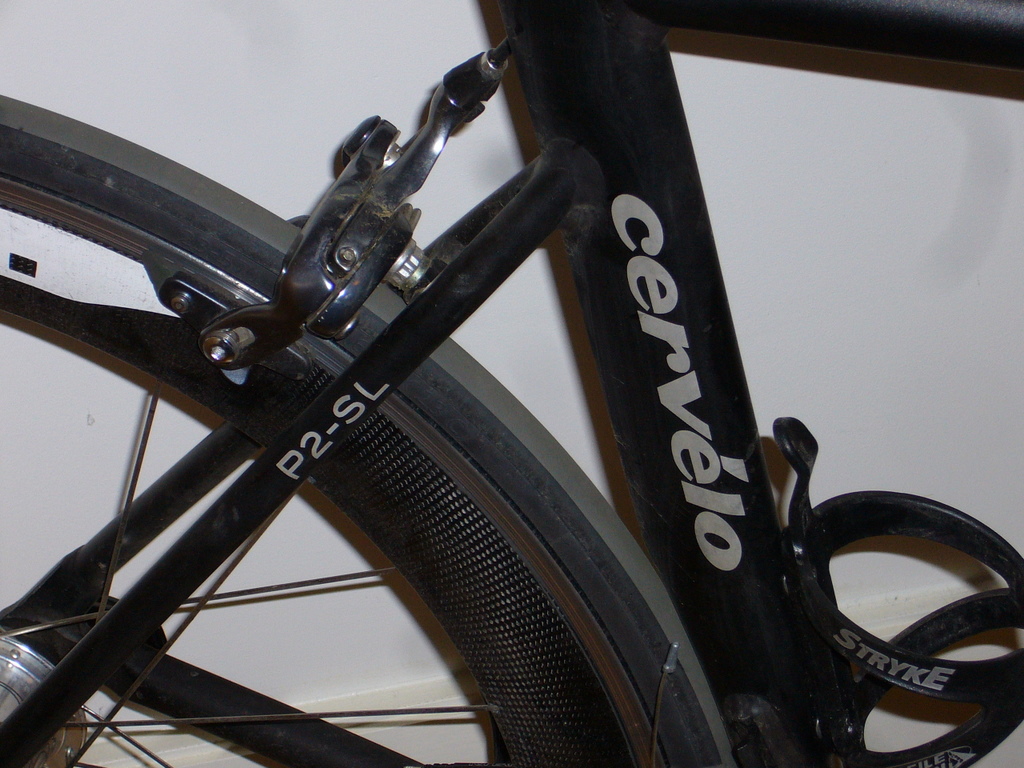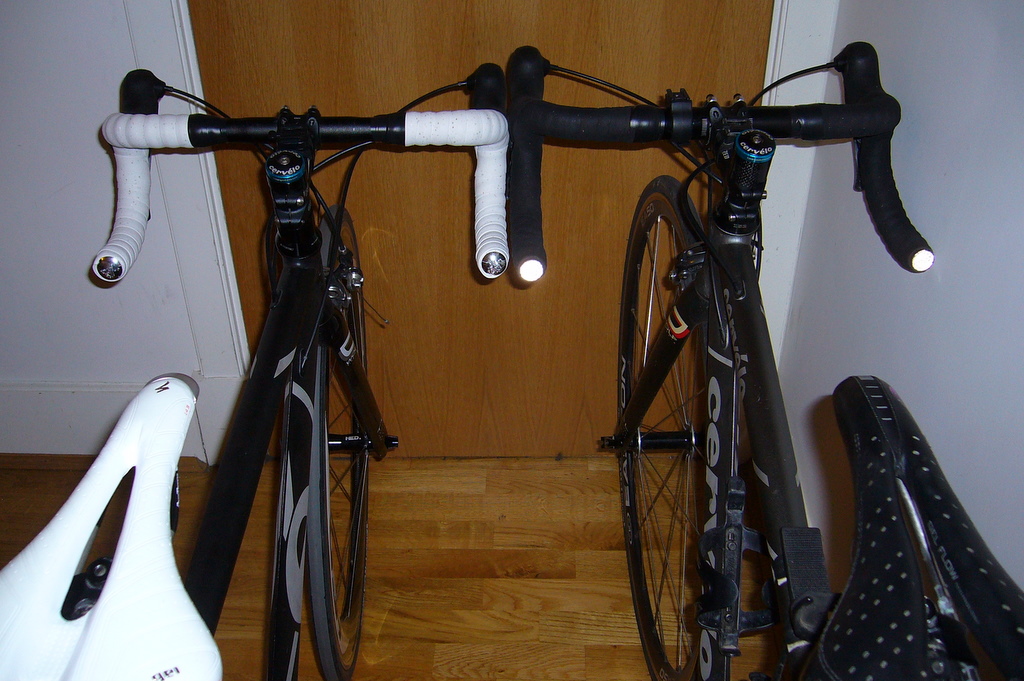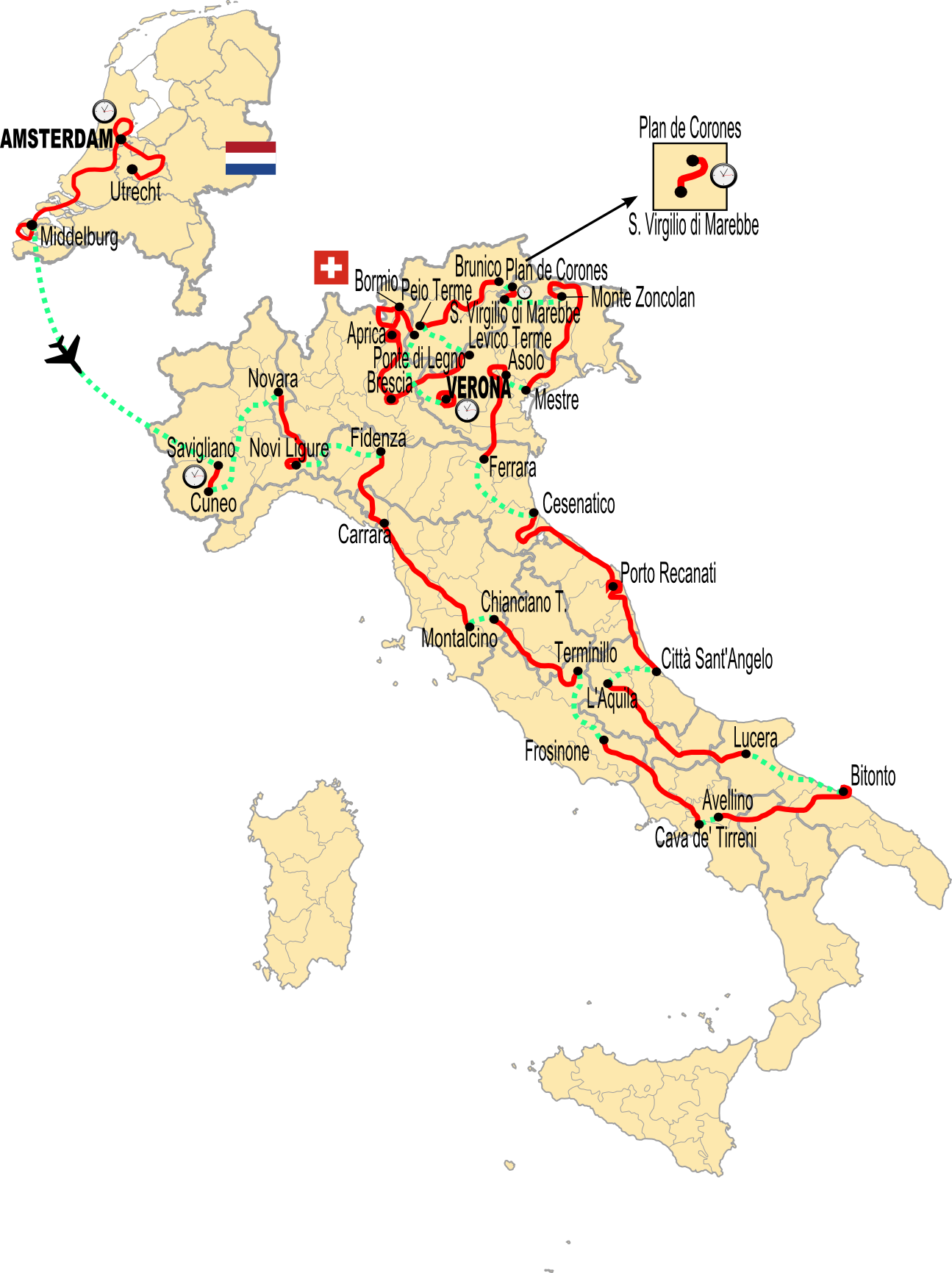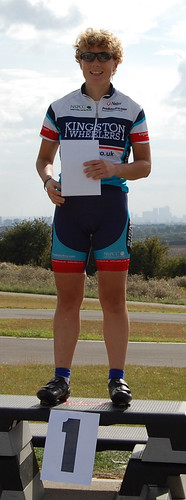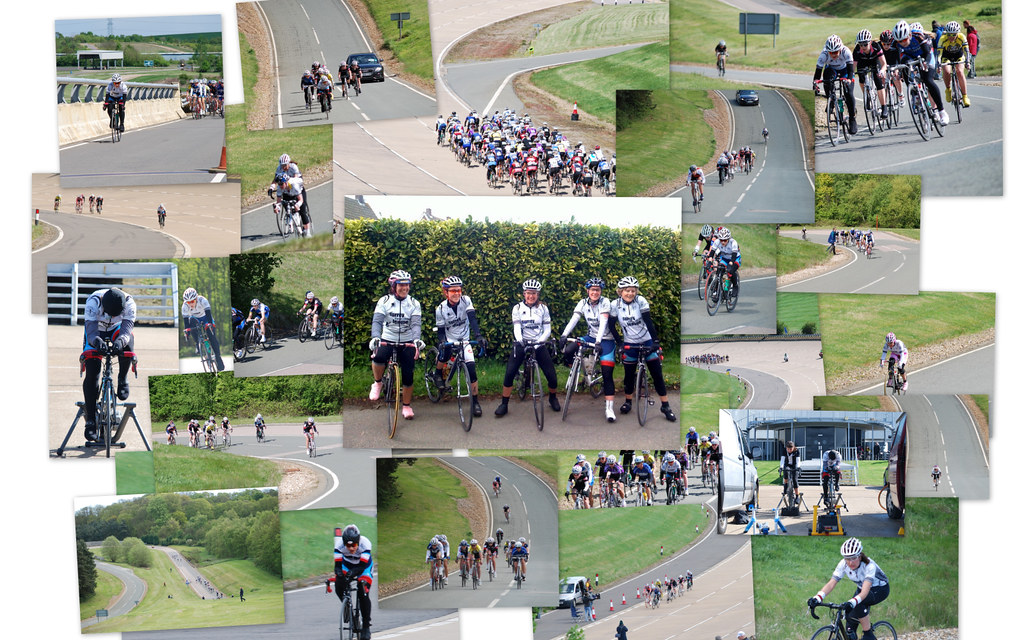
If I thought
day 1 was pretty tough, I had no idea what day 2 had in store! We woke up to blustery 4 degree temps, with the added fun of sideways rain squalls coming over every hour or so. The Millbrook testing centre -- built for testing cars and trucks -- would have been a great place to race had it been nice and sunny, but without any indoor facilities or running water, we had to make do with sheltering ourselves in the parking lot and changing in our vehicles. Luckily between Leona's van and Emily's camper we could set up a cosy little basecamp with our turbo trainers and stay dry and warm for the most part.
The morning started with an individual time trial, two laps around the banked oval speed circuit totalling about 6.5km. I had set myself a time goal of under 10 minutes and much to my surprise managed to pull that off. It was a tough race though, as we started into a headwind, gradually picked up a tailwind as we rode around the oval, then ran straight into a headwind again by the lap/finish line. Twice! My speed fluctuated between 30km/h at my slowest to 50km/h at my fastest -- all of which was on a dead flat smooth road.
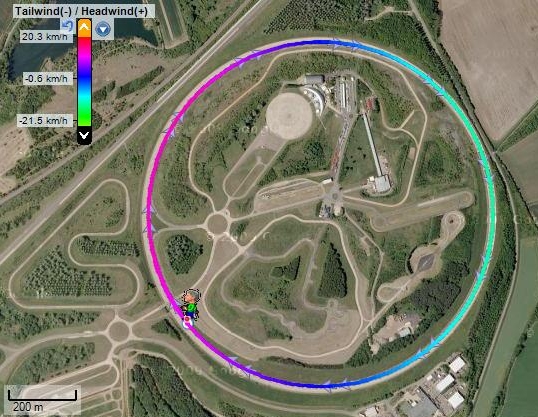 Quite the outdoor velodrome!
Quite the outdoor velodrome!My time of 9:45 put me into 8th place for the ITT and 13th place overall on the GC which would turn out to be the highest I'd get for the whole race. I managed 276 watts AP/NP, so perfectly paced and new power records to boot, which was quite pleasing. Maybe I should be thinking more about racing the individual pursuit on the track...?
We had a few hours to kill between the morning and afternoon races, and in that time Jim and Eddy were racing the men's support event. It hadn't warmed up and if anything the wind had gotten even stronger and more gusty. Jim had on every layer of gear he'd brought and then some, but never managed to warm up and dropped out after two laps of the hilly road circuit. He spent the rest of the day chilled -- no doubt made worse by standing out during our race and taking lots of photos -- and came down with a cold the following day. Eddy finished in 15th place in a race where nearly half the starters DNFed.
With just a single lap of the "alpine circuit" part of the course (consisting of a half-mile climb at 7%, a swift twisty downhill, then another 200m power climb at 14%) under our belts for a warmup, we headed to the start line for a neutralised lap of the oval then nine laps to follow. Having been warned about the more dangerous corners where the road narrowed and crosswinds kicked in, I was perhaps a bit overcautious as I ran off the front of the bunch leaving the oval and rode the next five minutes on my own, 10 seconds ahead of the bunch. An extra warm-up as it were, and an opportunity to stay out of trouble as the crosswinds caught some people out.
The next few laps were steady, though Catherine Williamson of Rapha attacked along with Anna Fischer of MaxGear to clean up the sprint and hill points. They never got more than a minute ahead of the bunch under the watchful eye of Horizon Fitness, even after a third rider joined them. Jim had suspected that Horizon had a deal amongst themselves to get Dani King the road race wins and Sarah Storey the overall GC, and he was right: no break was going to get away without the two of them in it.
As the bunch dwindled with every lap and my legs started to feel the punishment of the climbs, which were neither long enough nor steep enough to do me any favours, I had to fight to stay up near the front. Even if I crested the 14% hill at the front, I often lost lots of space on the downhill, and had to ride hard to get back on the bunch into the brutal headwind that followed. Then recover as best as I could in the oval, come out and cross the bridge and start it all over again for a new lap. I had a sneaking suspicion that I couldn't last the whole nine laps in that yo-yo, and I was right. On lap five, even as I was thinking to myself that I had to move up before the climb started, an attack went and our bunch of 20 split into three different groups with me in the third. Willpower was lacking, but legs were lacking even more. We tried to get back on, but once our little group realised that the chase was futile -- all the big names were in the front group, which would later catch the break, and the second group contained another eight strong riders -- we set about working together just to get through the rest of the race.
And so it went for the last four laps: in the oval and on the flat bits into the wind, we worked a smooth paceline; the hills we rode tempo and the descents we grouped back together. One rider attacked on our second lap together and rode off not to be seen again. That put us down to eight, which shortly turned to seven as another rider cramped up and suffered off the back. Those seven lasted the last laps, and as we left the oval to begin the bell lap, I crunched down an
Energy Surge and started thinking about how I could win our group sprint. First step: push the pace a bit more on the climbs, as I was easily making it up the hills in better shape than my companions. Second step: wait until the pace inevitably slowed and people started missing turns in the oval for the final mile or so, then attack. And sure enough, as we rode along with the tailwind and passed the 1km to go sign, the two riders up front stopped working and started chatting. I took that opportunity to launch the sprint of my life to come around them, and to get as aero as I could to put as much space between them and me as possible. After what seemed like an eternity but was probably only 20 seconds, I chanced a glance behind and saw that not only was I alone, I had a gap of nearly 100 metres.
Riding straight into the headwind, I was starting to hurt pretty badly, but soon the 200m banner appeared and shortly after that the finish line. I was losing speed rapidly -- down from 55km/h max after I launched my sprint to 32km/h into the wall of wind -- but I managed to hang on to get across the line clear of everyone else by several seconds. And it was worth it: that gap would get me one extra place higher on the GC, from 17th overall to 16th. And it was a nice finish to an otherwise disappointing race where I'd hoped to finish more like top 10.
Nonetheless, given the strength of the field this year I can't say I'm unhappy with my result. And I'm extremely proud of my teammates who all finished the race, which is more than can be said about most of the other teams. In fact, of 17 teams who entered, we were one of only three with no DNFs. Had the overall rankings for the team standings been done on cumulative rider time instead of finishing placings, we would have finished a strong 5th place with all our riders placing in the top 60 of 90 entrants. Between Rachel's strong day 1 race and Leona's strong day 2 race, they both salvaged good GC placements. Emily put on a great showing for her first stage race ever, and Claire despite feeling under the weather all weekend gutted it out and finished every race in the top 2/3rds of the field.
Here are the final BC
results, and
report/pics as well. And the nearly 300 photos that Jim took on day 2 are on
Flickr too.
I've taken my 25 favourite and created a little slideshow below (collage above). Onward to the next one!
